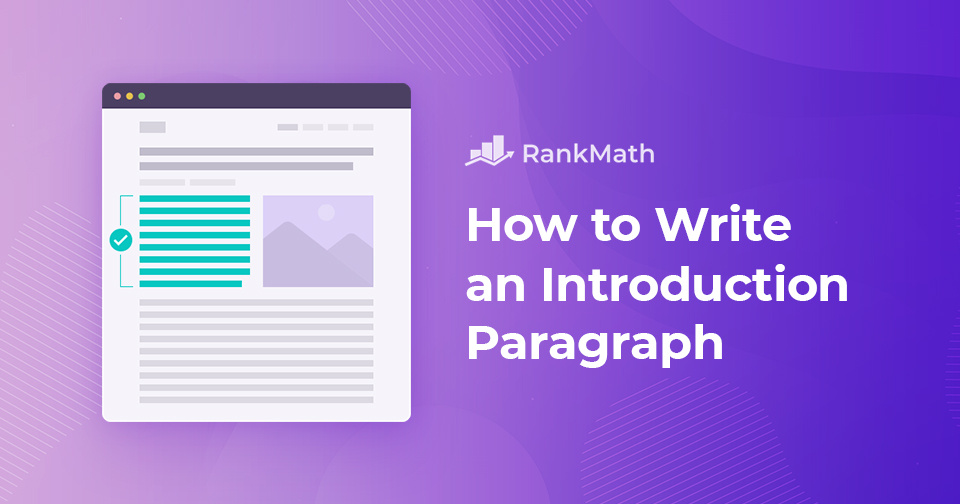Google is in awe of amazing content! We’re all aware of this, right?
And what’s THE most important part of a post or article? That very first paragraph!
So, you should give that introduction paragraph some extra attention!
Think about it: when someone clicks on your post, those opening lines decide whether they’ll keep reading or click away. Your introduction sets the tone, tells readers what to expect, and helps Google understand what your content is about.
But why is an introduction so important? And how can you be certain to create an introduction that is SEO-friendly?
In this post, we’ll talk about how to write captivating introductions and give practical tips on how to write an awesome first paragraph!
Table Of Contents
1 What is an Introduction Paragraph?
Your introduction paragraph is more than just the opening lines of your WordPress post; it’s the spark that decides whether your reader stays or leaves. In just a few sentences, you need to set the stage, introduce your topic, and make them think, This sounds interesting—I’m reading on!
The introduction should be concise and well-organized, but it also has a big job to do: grab attention. Think of it as the roadmap to your post and the forecast for what’s ahead. It’s not just the start; it’s the most powerful part of your article, and Google knows it, too.
Yes, that can feel intimidating, but it doesn’t have to be. Once you know how to approach each part of your introduction, writing one becomes a lot easier.
Here are a few tips that’ll help you write amazing introductions for your post.
2 How to Write an Introduction Paragraph
When you’re writing an introduction for your WordPress blog post, your goal is simple: give readers just enough information to understand what your post is about, and make them curious enough to keep reading.
Tip: You can also use our Blog Post Introduction AI tool, which helps you easily write your introduction.
2.1 Create a Hook
One of the most popular approaches for beginning an introduction paragraph is to create a hook.
So, what does hook mean here?
Think of it this way: when you start watching a new Netflix series, you look up a few hours (and maybe even a few episodes) later and say, “Whoa. I guess I must be hooked on this show!”
That’s how the hook should also work in an introduction paragraph: it should get your reader interested enough that they don’t want to press the proverbial “exit” button while reading it. In other words, a hook is designed to grab your reader’s attention and keep them reading your post!
It will be much simpler to create a hook (and the remaining part of your post) if you clearly understand the issues they’re encountering and the solution your article brings to the table.
Here’s an example of how we try to hook our readers on our blog post.
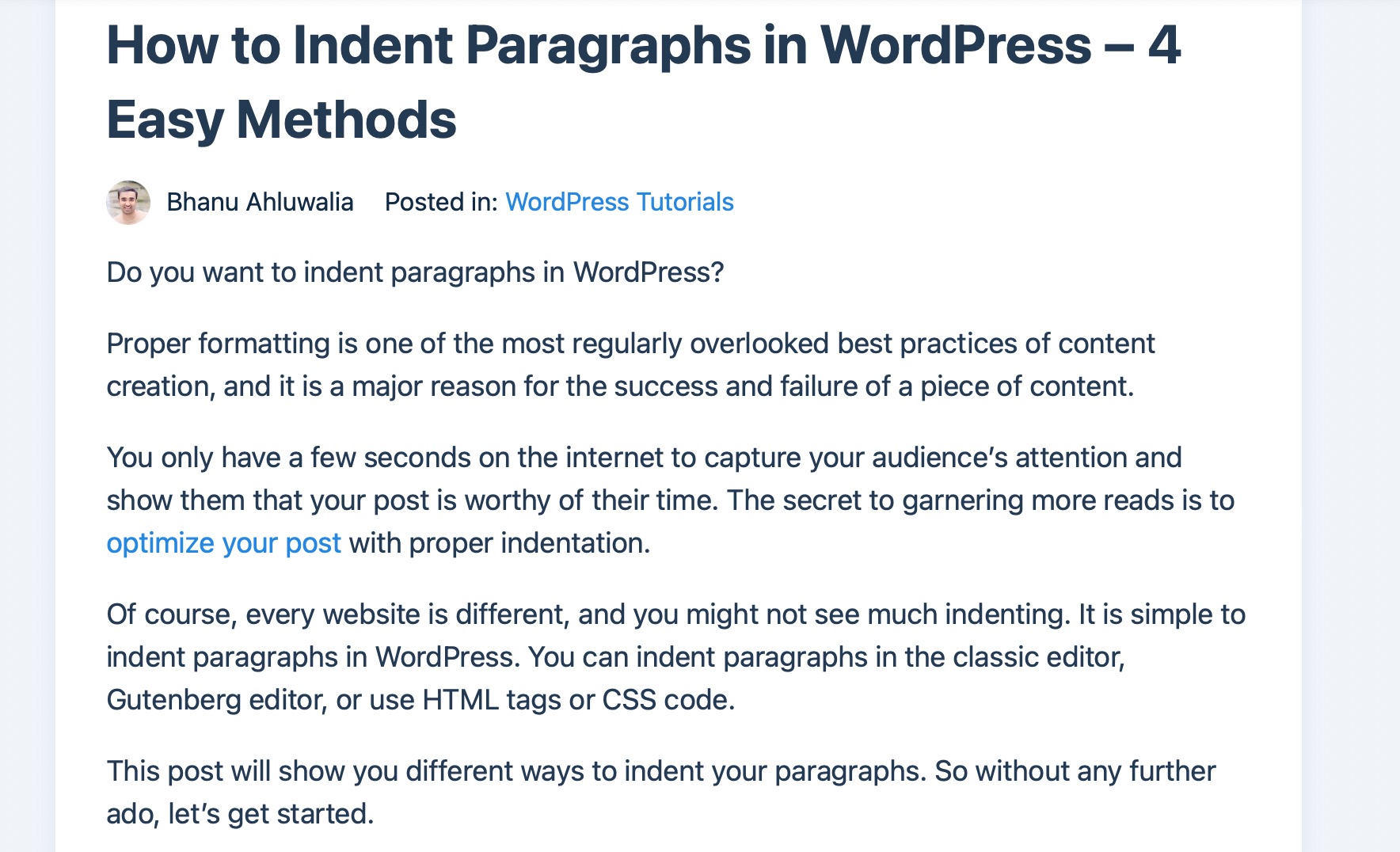
2.2 Introduce the Problem
Introduce the message of your article. After your hook, you can write two or three sentences introducing the main problem you’re solving in the blog post.
You immediately grab the readers’ attention by highlighting a pain point in your introduction. It tells them they’re in the right place, and you understand their problem.
For instance, here’s how we’ve highlighted the pain points of our readers who want to add a search bar to their site.
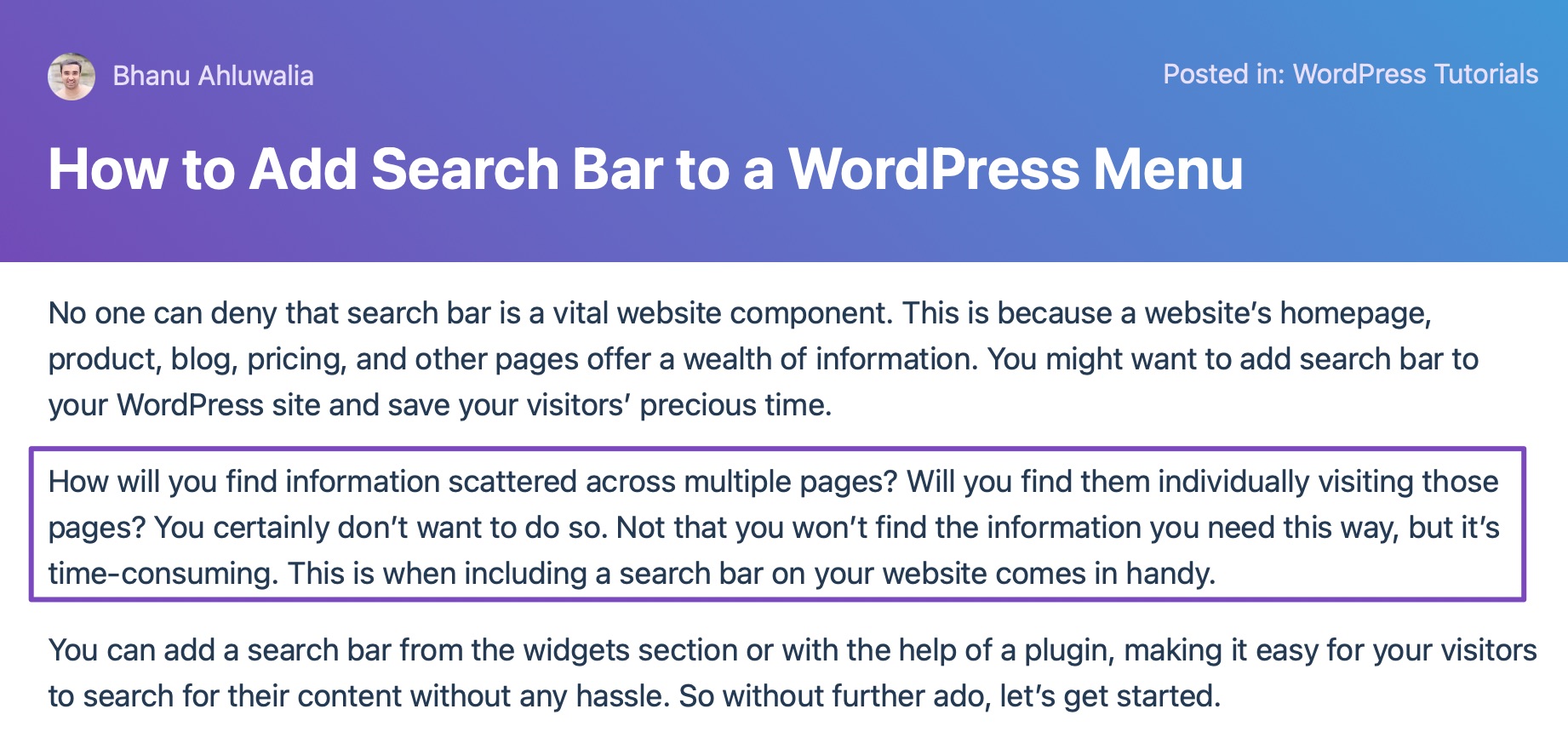
2.3 Inform Readers What to Expect
When you unfold a pain point, you start a ticking clock. If you don’t tell your audience how you’ll help, they’ll quickly lose patience and bounce. Once you’ve highlighted the pain point, you must deliver a solution in the rest of your content.
Your introduction should meet the expectations and answer the reader’s question: “Is this worth my time?”
You make this decision much easier by informing your audience what they can expect. It’s important to show them you know what matters and that you’re there to help them solve their problems.
In our posts, we always make it a priority to set clear expectations right from the start, and you should too if you want readers to stay engaged until the very end.

2.4 Use the Focus Keyphrase
If you want an SEO-friendly introduction, start by using your focus keyphrase in the very first paragraph. This helps both Google and your readers instantly recognize that your post matches what they were searching for.
When your target audience sees their exact search phrase right away, they’ll know they’re in the right place, and they’ll be more likely to keep reading. However, do not stuff keywords in your content and use them naturally.
To make this easier, you can use Rank Math’s Content AI right inside your WordPress editor. It gives you smart suggestions for related keywords, popular queries, and relevant links. Plus, it shows you exactly which phrases to include in your content, headings, and SEO metadata so you can optimize every part of your post.
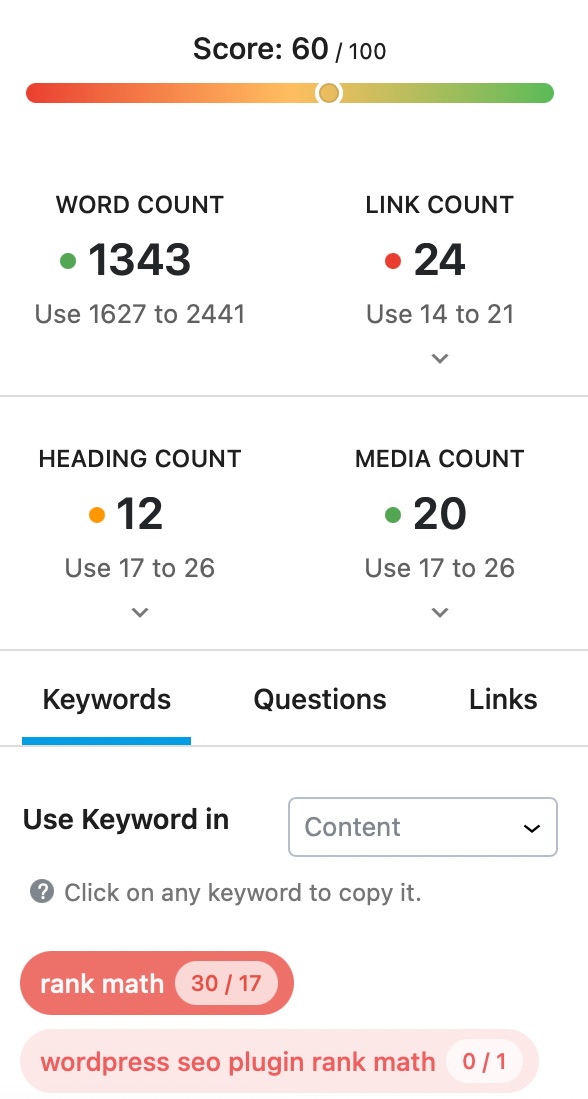
2.5 Keep it Clear and Make it Fun to Read
A blog is not the same as a novel, unfortunately, many newbie bloggers tend to forget this simple yet important fact.
Visitors who read your blog posts want to breeze through them effortlessly. When browsing the Internet, most of them are impatient to find the information they are looking for, so your content needs to be presented such that even skim-readers can quickly get a pretty clear idea of what it’s about.
Introduction paragraphs must be well spaced out –
- No more than 100 words per paragraph.
- You should try to use a line break to separate each paragraph. Your text will be simpler to read, which should keep readers on your website longer.
Include quotes, statistics, stories, etc., to make your introduction interesting and enjoyable to read. While stories can make your post more fun to read, quotes and figures will help you be more persuasive.
2.6 Explain the Benefits
Some people read the posts as they’re keen on learning something to help them make their lives easier. Whether it’s instructions on making pancakes or a guide on increasing customer retention, your readers want results.
Make your introduction more compelling by explaining the benefits of your content. How will reading your content help them to get the desired results?
Here’s an example of Backlinko. The introduction clearly states the article’s benefits in unambiguous terms.
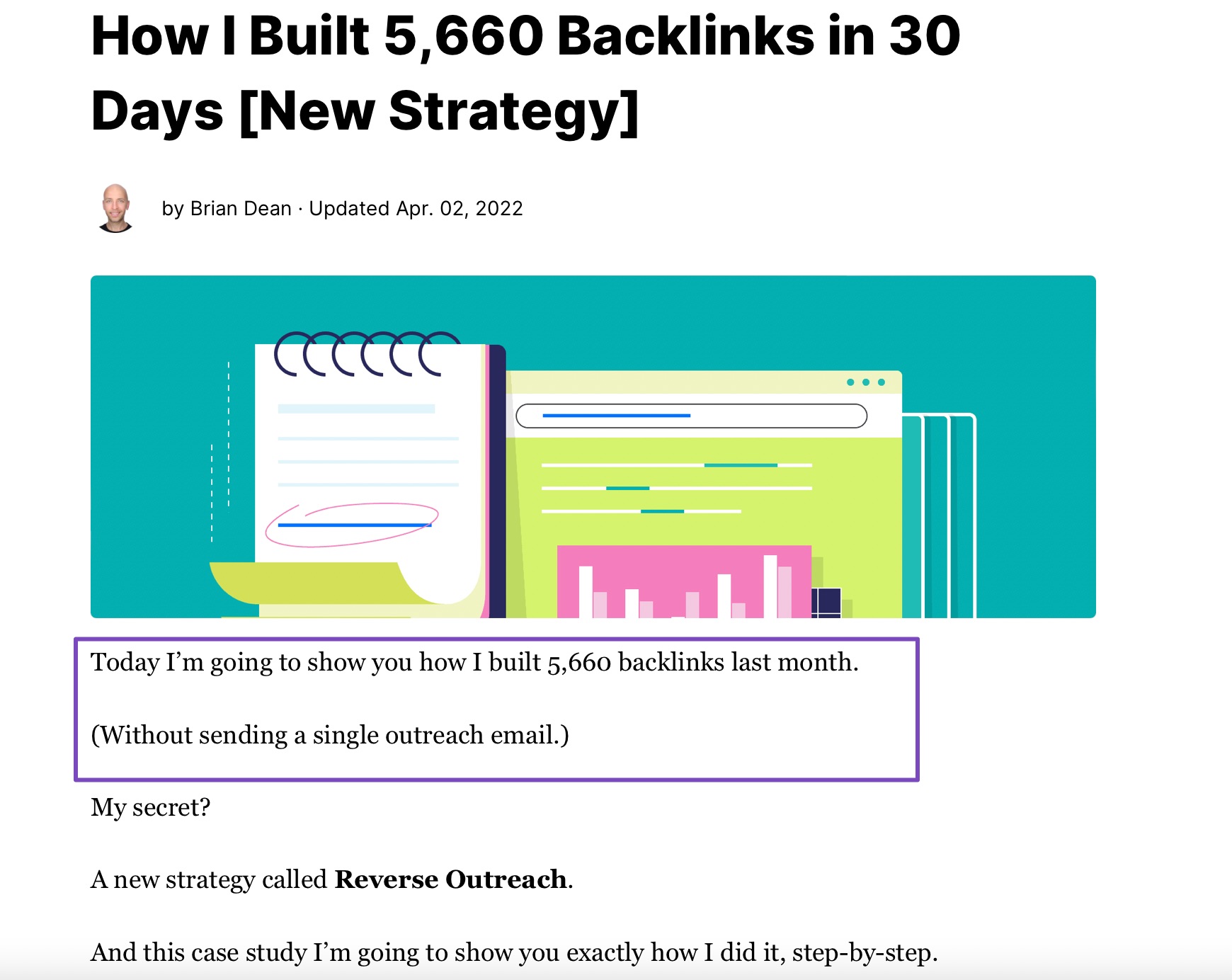
3 Conclusion
If you’re writing, you want your writing to be read. You want your audience to understand what you’re trying to say. You want your content to rank higher in the search engines. So, pay additional attention to the introduction, which is the most crucial section of your text. Give the first paragraph some extra SEO love.❤️
The more you write, the more you’ll discover new tricks of the trade when making your posts stand out, inevitably helping keep the visitors on your page for longer.
These tips are worth a try for writing compelling introductions. What tactics do you use to create attention-grabbing introduction paragraphs? Let us know by tweeting @rankmathseo.
